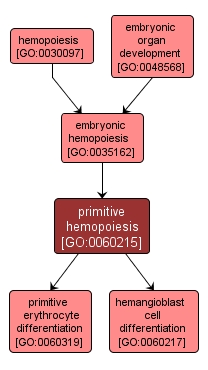GO TERM SUMMARY
|
| Name: |
primitive hemopoiesis |
| Acc: |
GO:0060215 |
| Aspect: |
Biological Process |
| Desc: |
A first transient wave of blood cell production that, in vertebrates, gives rise to erythrocytes (red blood cells) and myeloid cells. |
Synonyms:
- primitive haemopoiesis
- primitive hematopoiesis
- primitive haematopoiesis
|
|

|
INTERACTIVE GO GRAPH
|














